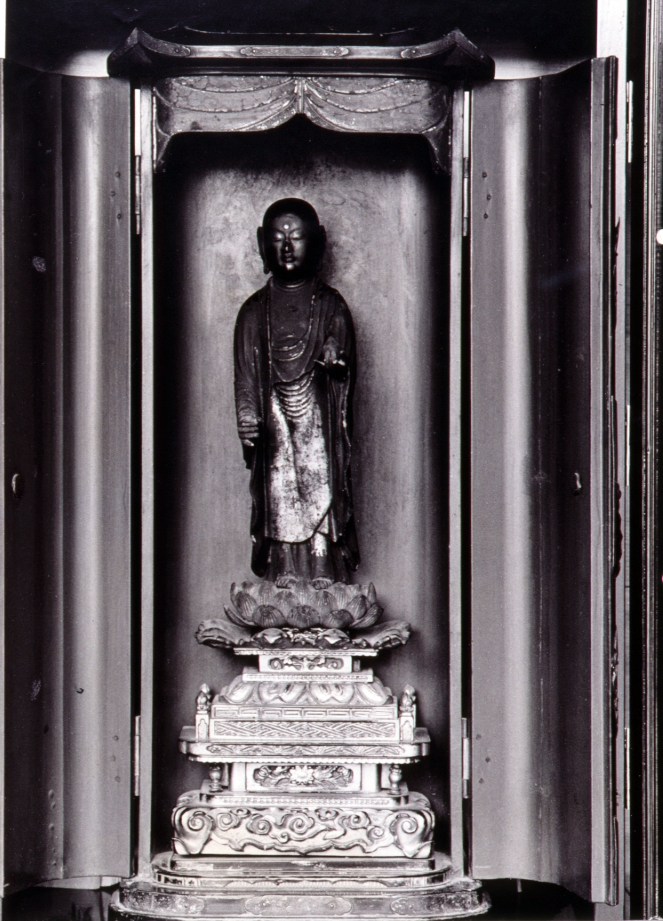The Benibana Museum (The Safflower Museum)
36. Benibana Jizo as a Guardian (紅花を見守る紅花地蔵)
At the Futsukamachi (二日町) of Kaminoyama City near Zao Mountains(蔵王連峰), there used to be a fifty centimeters tall little statue of Jizo. In the blooming season of benibana, many visitors from neighboring village came and were given an amulet to get rid of stem germs of benibana. People called this statue "Benibana Jizo" and they prayed the safety of growing of the flower as well as other crop harvests.
37. Color of Twelve Official Ranks (冠位十二階制の色彩)
This rank system was said to have been created by Shotokutaishi(聖徳太子) in December of 603 of Emperor Suiko (推古天皇) reign.
The ranks were decided by the colored cap and settled the clear seats of the Court. The names of each rank were divided into major and minor virtues, colored by purple, blue, red, yellow, white and black respectively.
38. Rich Benibana Traders and Road of Culture (紅花大尽と文化の道)
Hachiemon Suzuki(鈴木八右衛門) in Obanazawa, who was called a rich benibana trader, had the following episode.
At about Genroku(元禄) period, this wealthy trader shipped many packages of benibana to Edo. But the Edo merchants made a league not to buy benibana, then he burnt those packages at the coast of Shinagawa(品川). (In fact the contents of the packages were stained cotton trashes or so.) But this news rapidly ran all through the Edo streets and its price suddenly raised up. He could earn lot of money. People of Edo were surprised at his bold doing and they sang Hachiemon's gorgeousness in a cant song.
Thus, he was called a benibana wealthy merchant, who played important role of finance and trade. Of course, the story above might be a legend. Because Mogami benibana was usually conveyed to Kyoto and Osaka, not to Edo. Nevertheless, this story delivers us the prosperity of the trading.
He was also familiar with haikai(俳諧) and named himself "Seifu"(清風). The famous haiku master, Basho Matsuo visited his residence by way of touring around Tohoku area. The master stayed there over ten days. During the stay, he visited Yamadera and sometimes held a haiku party. Now, many historic materials are preserved at the Basho-Seifu Memorial Museum in Obanazawa. The route of benibana was, so called "the way of culture".
